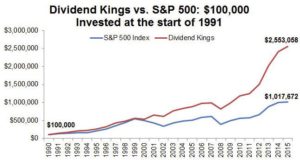Contents
Investing in equities does not need to be complicated. This is something you can do yourself.
There is no reason to invest through expensive actively managed mutual funds. In fact, few actively managed funds have an enviable track record.
A relatively recent in-depth study by S&P Dow Jones Indices found 100% of actively managed equity funds sold in the Netherlands failed to beat their benchmark over the past five years. In addition, 95% of funds sold in Switzerland and 88% of those offered in Denmark also underperformed.
Overall in Europe, four out of five active equity funds failed to beat their benchmark over the past five years. This ratio rises to 86% when their performance is compared to the benchmark over the past decade.
According to S&P’s analysis of the performance of 25,000 active funds when fees are taken into consideration, 98.9% of US equity funds, 97% of emerging market funds, and 97.8% of global equity funds underperformed over the past 10 years.
AthenaInvest, a Denver-based research/investment company, found that 90% of fund managers beat the market but their shareholders do not. While fees have a significant detrimental impact on the returns investors receive from their mutual fund investments there are three other factors which also negatively impact returns. These factors are:
1. Asset bloat – it is more difficult to beat a benchmark with larger versus smaller funds;
2. Closet indexing – active portfolios act mostly like an index fund because financial advisers and investors want returns in line with expectations for the sector or the market;
3. Over-diversification – virtually all of a manager’s ability to deliver superior performance comes from the top 20 holdings in a portfolio. Holdings in excess of this number contribute little to performance.In some cases over-diversification may even be harmful to a fund’s performance.
Improved Disclosure on Fund Fees (CRM2)
A recent article in the January 3, 2017 edition of The Financial Post questioned whether performance-based fees are better for investors relative to the conventional fee based structure where fees are a percentage based on the amount of assets under management. In the case of fees based on assets under management, fees are charged regardless how the investments have performed relative to a pre-determined benchmark.
Recent regulatory changes, called Client Relationship Model Phase 2 (CRM2), are being introduced to provide better disclosure so Canadian investors have a better picture of how much they pay in fees for their investments. CRM2 will require investment firms to provide two separate reports. These reports will:
- specifically outline how clients’ portfolios have performed over time;
- disclose the total compensation paid as an actual dollar amount.
The soon to be released 2016 annual investments statements will be among the first to reflect these regulatory changes.
Exchange Trade Funds
An increasing number of investors are concerned about excessive mutual fund fees. This explains the dramatic increase in assets held within Exchange Traded Funds (ETFs).
While ETFs and mutual funds have management expense ratios (MERs), management fees, and trading expense ratios that are borne by the fund before investors receive any return on their investment, the fees for ETFs are typically lower for ETFs.
Learn to Invest Through Self-Directed Accounts
While ETFs are, in most cases, a superior investment vehicle than actively managed mutual funds, I believe investors can manage their own investments. The exception, however, would be if:
- The total amount to invest is relatively small; it is difficult to achieve proper diversification when you have little to invest;
- an investor with limited or no investment knowledge has absolutely no interest in learning how to properly assess the strengths and weaknesses of a company.
If you are willing to learn how to properly invest you can easily establish a self-directed investment account(s) and make your own investment decisions. I am NOT advocating you rush out, open investment accounts, and start trading equities. You need to learn what constitutes good investments.
Dividend Kings and Dividend Aristocrats
Companies that have consistently increased their dividends for at least 50 consecutive years (Dividend Kings) or at least 25 consecutive years (Dividend Aristocrats) is a good place to start looking for solid companies in which to invest. Members of these two exclusive lists have produced annualized risk-adjusted returns far in excess of the S&P 500 over the last decade while exhibiting lower volatility.
Companies on these lists:
- pay dividends generated from earnings or cash flows from normal business operations.
- are typically more selective with growth projects.
Dividend Kings and Dividend Aristocrats have, and will likely, continue to outperform the market and other dividend paying stocks because they typically are higher quality businesses.
NOTE: There are wonderful companies that do not appear on these two lists. Two such examples would be VISA (NYSE: V) and Mastercard (NYSE: MA). They only became publicly traded companies within the past few years.
Many of the companies on Dividend Kings and Dividend Aristocrats lists are included in the top 20 holdings of many mutual funds and ETFs. You do not need to be a professional money manager to determine that Johnson & Johnson, Microsoft, Exxon Mobil, ADP, Cisco, CN Rail, the 5 largest Canadian banks, Visa, and Mastercard, are worthwhile long-term investments.
If you are worried that investing on your own will restrict your ability to benefit from international exposure, fear not. Some of these companies have huge international operations. Furthermore, you also know their financial results are audited as per Generally Accepted Accounting Principles (GAAP). The same cannot be said for companies that are publicly traded on stock exchanges in other areas of the globe.
Final Thoughts
I do not endorse investing in every company on the Dividend Kings and Dividend Aristocrats lists. Doing so would result in over-diversification; this is one of the reasons why most funds underperform their benchmark.
You would be better to allocate your money over a manageable cross-section of high-quality, mostly dividend paying stocks and to evenly spread your investments over the five main economic sectors (Resources, Manufacturing, Finance, Utilities and Consumer).
It is also important you:
- learn the basics of investing;
- avoid stocks in the broker/media limelight;
- have a healthy sense of skepticism and a reasonable level of patience;
- stay away from speculative investments.
It might seem daunting at first if you are totally unfamiliar with business and the analysis of financial statements. There is, however, a wealth of valuable information on the internet from which you can learn at your own pace.
Don’t give up. Investing does not need to be complicated.




